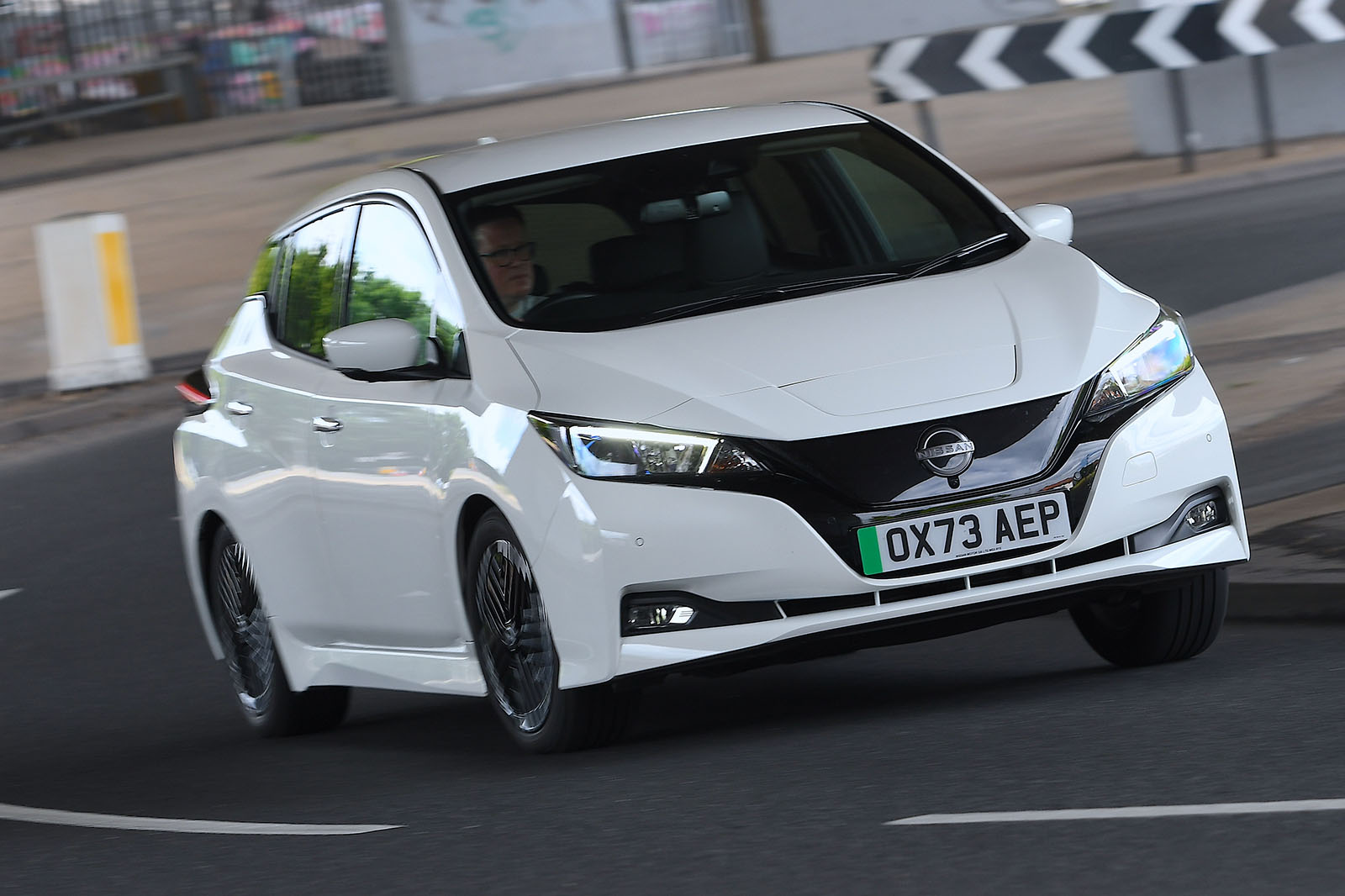
There’s a certain simplicity to the interior layout of the Nissan Leaf that those frustrated by the car industry’s fixation with touchscreen technology might just embrace.
There’s a clear sense of antiquation too, of course; and a certain plainness and monochrome drabness about the mouldings and materials used that fails to invite you in, or appeal much to your senses, like the cabin of a Cupra Born or Hyundai Kona might.
The trick to realise is where, if anywhere, this car is likely to find its buyers in what remains of its lifecycle: not among those who can afford richer-looking and -feeling alternatives, but as a cut-price rival to Chinese-made EVs like the MG 4, BYD Dolphin and GWM Ora 03. Next to cars like those, there’s a certain reassurance and solace to be found in a dependable known quantity of an interior like the Leaf’s, from a company like Nissan that’s been majoring on sensible cabin designs for generations.
The car’s driving position is improved but still feels oddly perched (because you’re sitting, even up front, directly above the drive battery), and still lacks a bit of longitudinal seat travel for longer-legged drivers, and telescopic steering column adjustment also. Perceived cabin quality’s a shade improved from the 2011-2017 Nissan Leaf’s standard, though it was never really good enough for the prices being asked for upper-tier versions of this car a few years ago; in 2024, for less than £30,000, it’s passable – but no better.
In front of the driver, in the case of our Shiro-spec test car, was a half-digital, half analogue instrument binnacle with a clock-style speedo and a screen-style drive/trip computer. The car’s infotainment system is a smallish 7in touchscreen setup with quite basic-looking graphics, and physical shortcut buttons around its margin; and there’s a physical button console for heating and ventilation just below, as well as fairly chunky physical switches and knobs for drive selection, electronic handbrake activation and start/stop.
In the back seat, there’s space for smaller adults and younger teenagers, but both head- and legroom are a little too limited for larger occupants; here, both an MG4 and a VW ID 3 are more spacious.
Boot space is more impressive, at 385 litres under the parcel shelf; and Nissan provides some handy retention nets in which to keep your charging cable tidy.
